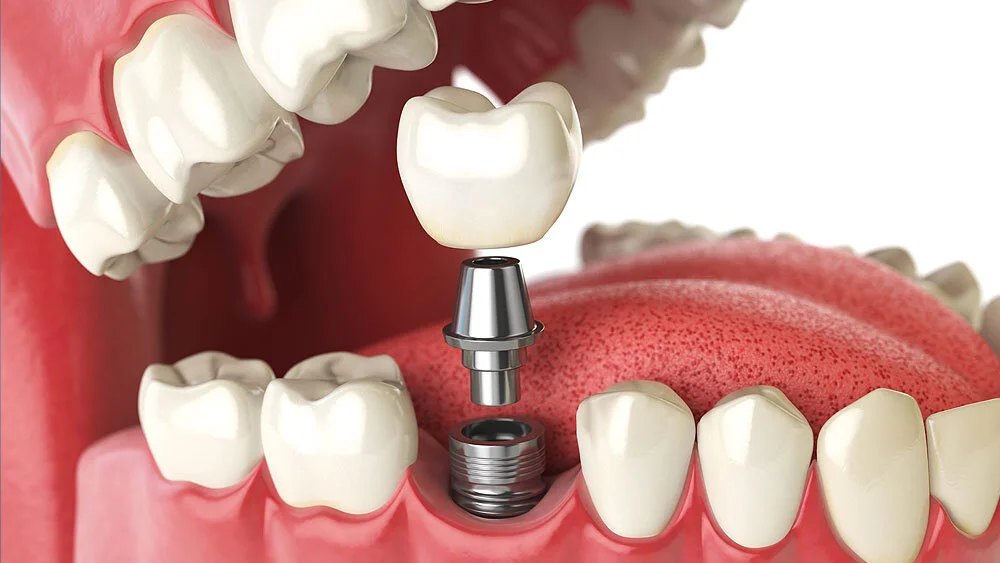Dental implants
A dental implant is a surgical fixture placed into the bone of the jaw to replace a missing tooth/teeth. It integrates with the bone over a 3 to 6 month period.
The goal of implant dentistry is to restore the function and aesthetic the patient loses from a failed or missing tooth/teeth.
Dental implants are made from high-grade titanium, which is an extremely biocompatible material that’s used in various medical and orthopedic procedures all over the body. Again, dental implants act as a replacement for the root of a missing tooth. They are allowed to heal for a 3-6 month period. During this healing period, the bone of the jaw will fuse with the dental implant and strengthen its anchorage within the bone.
Dental implants can be used to replace a single missing tooth, to stabilize a dental bridge for multiple missing teeth, or as anchorage for full sets of dentures with the implant over the dentures or implant-supported dentures called, “All on 4’s”.
How does the implant process work?
Step 1: Dental Implant Consultation
We start by determining whether or not the patient is a good candidate for dental implants by looking at the quality and quantity of bone in the area in need of treatment.
The dental implant consultation may also include impressions for models, digital scans, X-rays, or pictures to help act as a guide for the implant placement and final restoration.
Step 2: Implant Placement
If you are a good candidate for dental implants, the next procedure is the surgical placement of the dental implant into the area of the missing tooth or teeth.
The site of the dental implant often still has an existing damaged tooth present and the tooth will need to be extracted and a bone graft placed. In some instances, when enough bone is present, the damaged tooth can be extracted and followed by the implant placement at the same appointment.
Once the dental implant is placed in the bone, a small cap called a healing cap is placed over the top to help keep the tissue from covering the implant while also helping guide the esthetic outcome of the final restoration
Step 3: Healing period
Over the next 3 to 6 months the process known as osseointegration takes place. This is when the bone of the jaw and implant actually fuse together creating a strong foundation for the final restoration, which will be placed on top of the implant
Step 4: Place your restoration
Once the patient has healed the final step in the implant process is to place the final restoration. This will restore the patient’s function and desired aesthetics giving them the confidence to smile without the worry of having a missing or failing tooth.



